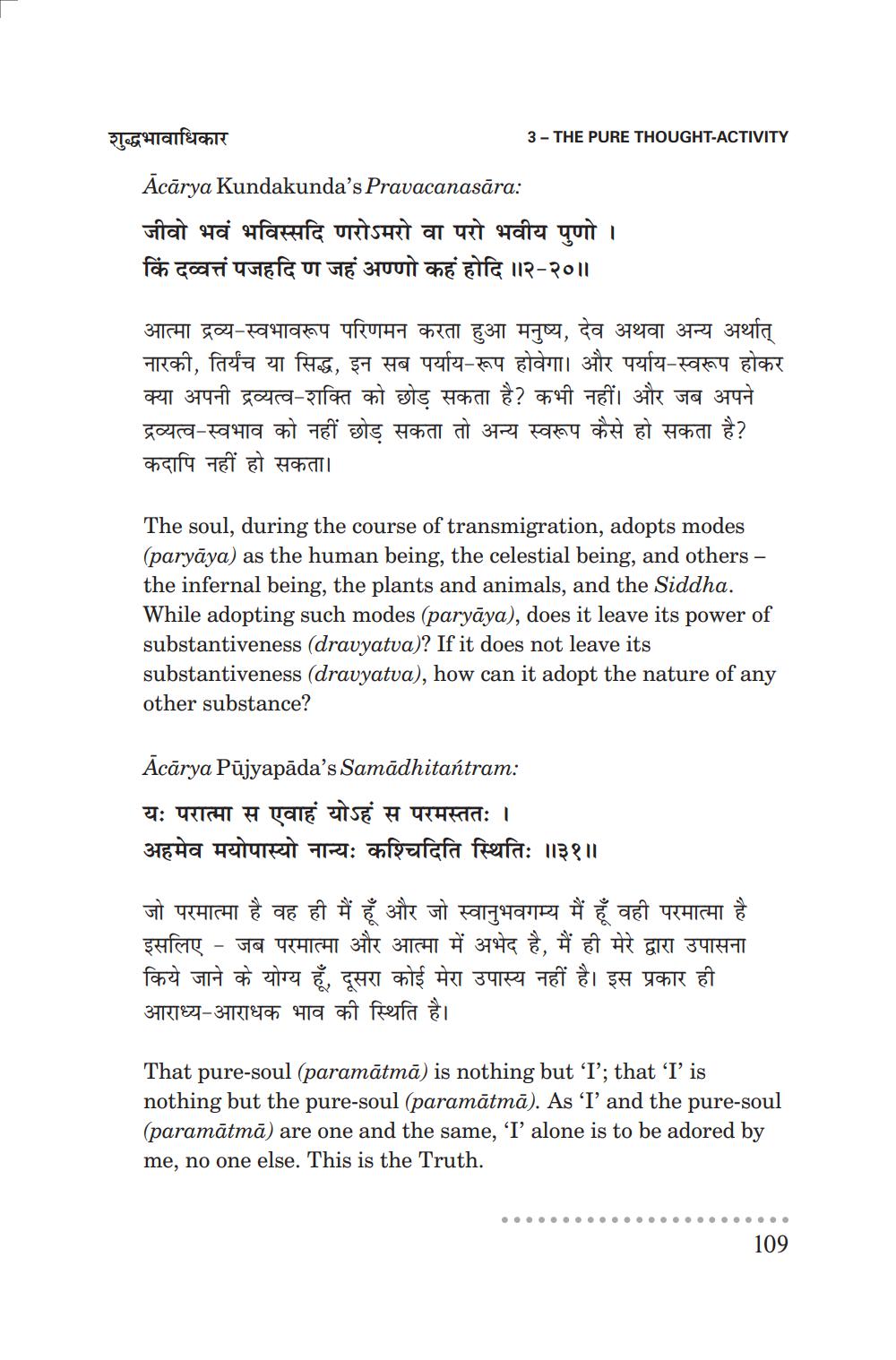________________
शुद्धभावाधिकार
3- THE PURE THOUGHT-ACTIVITY
ācārya Kundakunda's Pravacanasāra:
जीवो भवं भविस्सदि णरोऽमरो वा परो भवीय पुणो । किं दव्वत्तं पजहदि ण जहं अण्णो कहं होदि ॥२- २० ॥
आत्मा द्रव्य-स्वभावरूप परिणमन करता हुआ मनुष्य, देव अथवा अन्य अर्थात् नारकी, तिर्यंच या सिद्ध, इन सब पर्याय - रूप होवेगा । और पर्याय -स्वरूप होकर क्या अपनी द्रव्यत्व-शक्ति को छोड़ सकता है? कभी नहीं। और जब अपने द्रव्यत्व - स्वभाव को नहीं छोड़ सकता तो अन्य स्वरूप कैसे हो सकता है ? कदापि नहीं हो सकता।
The soul, during the course of transmigration, adopts modes (paryāya) as the human being, the celestial being, and others – the infernal being, the plants and animals, and the Siddha. While adopting such modes (paryāya), does it leave its power of substantiveness (dravyatva)? If it does not leave its substantiveness (dravyatva), how can it adopt the nature of any other substance?
ācārya Pūjyapāda's Samādhitantram:
यः परात्मा स एवाहं योऽहं स परमस्ततः ।
अहमेव मयोपास्यो नान्यः कश्चिदिति स्थितिः ॥३१॥
जो परमात्मा है वह ही मैं हूँ और जो स्वानुभवगम्य मैं हूँ वही परमात्मा है इसलिए – जब परमात्मा और आत्मा में अभेद है, मैं ही मेरे द्वारा उपासना किये जाने के योग्य हूँ, दूसरा कोई मेरा उपास्य नहीं है। इस प्रकार ही आराध्य - आराधक भाव की स्थिति है।
That pure-soul (paramātmā ) is nothing but ‘T'; that ‘I’ is nothing but the pure-soul (paramātmā ). As 'I' and the pure-soul (paramātmā) are one and the same, 'I' alone is to be adored by me, no one else. This is the Truth.
......
109




